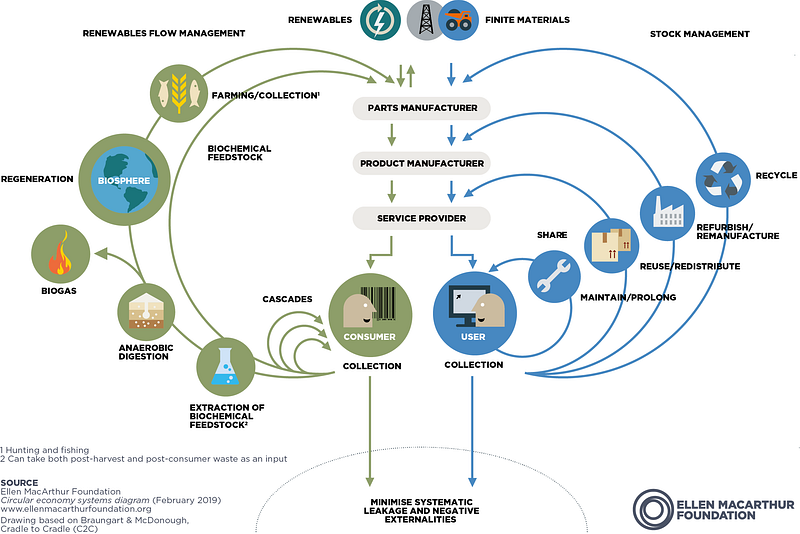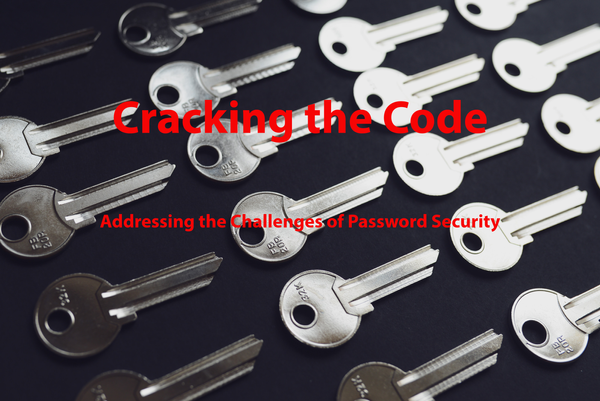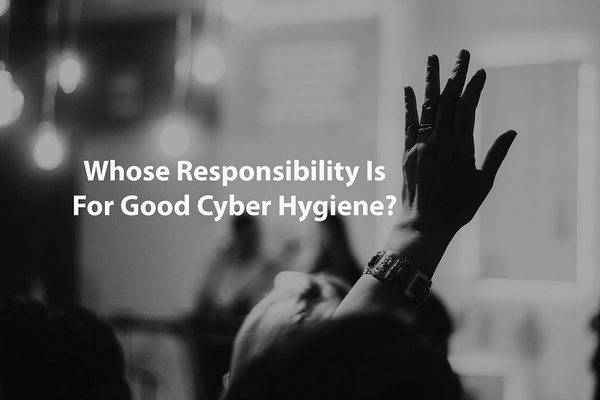What Cybersecurity Can Learn From Circular Economy?
CyberSecurity

Originally published at https://cyberbakery.net on February 5, 2022.
Cybersecurity and Circular Economy (CE) are not the terms taken together. Cybersecurity is often related to hacking, loss of privacy or phishing, and CE is about climate change and environmental protection. However, cybersecurity can learn quite a few things from CE, and this post will focus on our learnings from CE for cybersecurity sustainability.
In the times we live in, our economy is dependent on taking materials from the natural resources existing on Earth, creating products that we use, misuse, and eventually throw as waste. This linear process creates tons of waste every day presenting sustainability, environmental, and climate change challenges. On the other hand, CE strives to stop this waste & pollution, retrieve & circulate materials, and, more importantly, recharge & regenerate nature. Renewable Energy and materials are key components of CE. It is such a resilient system that detaches economic activity from the consumption of products.
CE is not a new concept but is popularised by a British sailor, Ellen Macarthur. Her charity advises governments and organisations on CE. The following picture is the “butterfly diagram”, which illustrates the continuous flow of materials within the economy independent of the economic activity. As shown in the picture, CE has two main cycles- The technical and the Biological Cycle. In the technical cycle, the materials are repaired, reused, repurposed, and are recycled to ensure that the products are circulating in the economy. However, in the biological cycle, the biodegradable organic materials are returned to the Earth by triggering decomposition, allowing nature to regenerate, continuing the cycle.

As noted above, the lack of CE can be devastating for the planet. Humans are producing a humongous amount of waste loitered around us is unsustainable and devastating for the humans and other inhabitants of Earth. Similarly, with the ever-increasing cost of cyber-attack breaches, businesses are vulnerable to extinction. IBM Security and the Ponemon Institute commissioned Cost of a Data Breach Report 2021. According to this report, the cost of breaches has increased by 10% in the year 2021, which is the largest is the largest single-year on year increase. The business loss represents 38% of the breach costs due to customer turnover, revenue loss, downtime, and increased cost of acquiring new business (diminished reputation).
Sustainability is about using and/or reusing something for an extended period without reducing its capability from short- to long-term perspectives. Cybersecurity is sustainable if the implemented security resources do not degrade or become ineffective over some time to mitigate security threats. Achieving sustainability is not easy and, most certainly, is not cheap. The organisations must take a principle-based approach to cybersecurity. As the manufacturing process within CE where sustainability is considered from the ground up, Security must be part of the design and production phase of the products. The system shall be reliable enough to provide its stated function. For example, a firewall should block any potential attack even after a hardware failure or a hacker taking advantage of a zero-day compromising your environment.
By nature, digital systems produce an enormous amount of data, including security-specific signals. Unfortunately, finding a needle from a haystack is challenging and often overwhelmingly laborious. In CE, we have found ways to segregate different types of waste right at the source, making it easier to collect, recycle and repurpose faster. Similarly, the systems shall be designed to separate relevant security data from other information at the source rather than leave it to the security systems. This segregation at source will help reduce false positives and negatives, providing reliable and accurate information which can be used for protection. The improved data accuracy will also help prioritise response and recovery activities due to a security incident.
CE’s design principles clearly define its two distinct cycles (technical and biological) as mentioned above in the post to deal with biodegradable and non-biodegradable materials. These cycles ensure that the product’s value is maintained, if possible, by repairing, reusing, or recycling the non-biodegradable materials. Similarly, the materials are returned to nature through the processes such as composting. Cybersecurity, despite the conceptual prevalence of “Secure by Design” principles for a long time, the systems, including security products and platforms, often ignore these principles in the name of convenience and ease of use. Any decent security architecture shall ensure that the design process inherently considers threat modelling to assess risks. The implemented systems are modular, retaining their value for as long as value. This will guarantee that the cybersecurity products, platforms and services are producing the desired outcome and are aligned to the organisation’s business requirements. There shall always be an option to repurpose or recycle components to return on security investment.
The technical cycle in CE is resilient to change dynamically. As discussed above, CE is predominantly detached from the economic conditions and shall continue to hold value until the product can no further be repaired, reused or repurposed. If the product or a component can’t be used, its materials can be recycled to produce new products by recovering and preserving their value.
Cyber resiliency is not something new but is being contextualised in recent times by redefining its outcome. As we know, cyber threat paradigms are continually changing, and only resilient systems are known to withstand such a dynamic. Resilient cybersecurity can assist in recovering efficiently from known or unknown security breaches. Like CEs technical cycle, achieving an effective resiliency takes a long time. First, baseline cybersecurity controls are implemented and maintained. Similarly, redundancy and resiliency go hand in hand and therefore, redundancy should just be included by design.
I am sure we can learn many more things from CE to set up a sustainable and resilient cybersecurity program that is self-healing and self-organising to ensure that systems can stop security breaches. So I would like to know what else we can learn from CE.
.
Please enable JavaScript to view the
Originally published at https://cyberbakery.net on February 5, 2022.




